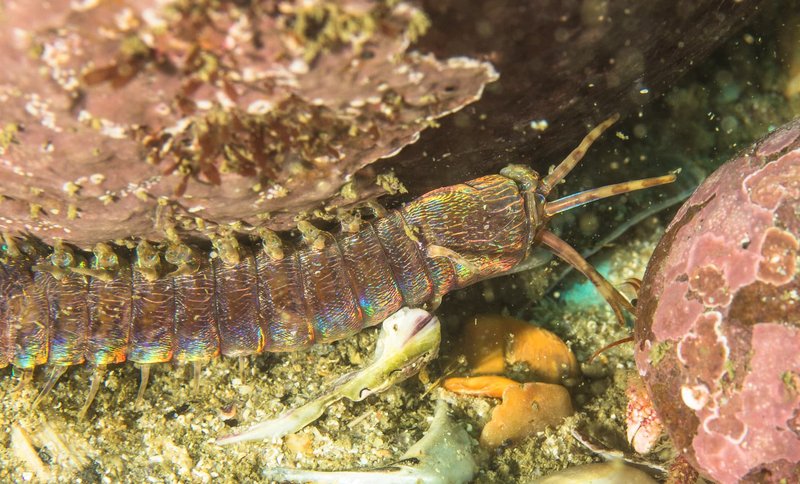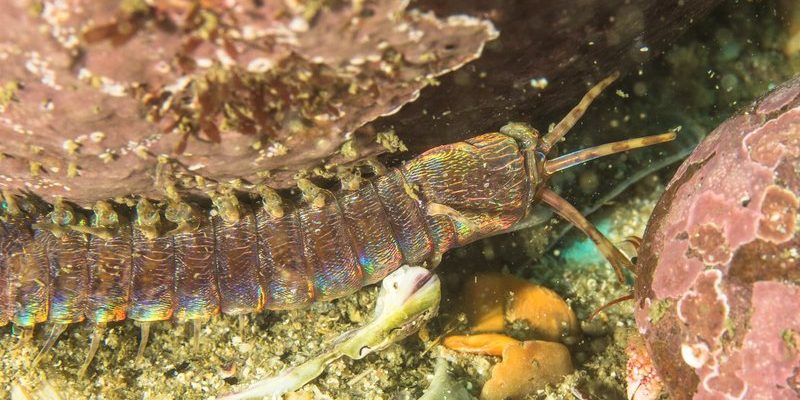
In this guide, we’ll dive deep into the fascinating world of bobbit worms. We’ll explore different species, how to identify them, and what makes each one unique. Don’t worry if you’re not a marine biologist—this will be a straightforward and fun journey into the underwater realm of these intriguing beings. So grab your metaphorical snorkel, and let’s get started!
What Are Bobbit Worms?
Bobbit worms, scientifically known as *Eunice aphroditois*, belong to a group of marine creatures called polychaete worms. These worms are not your average backyard variety. They can grow up to 10 feet long and have long, segmented bodies covered in vibrant bristles. Typically found in warm, tropical waters, bobbit worms are naturally camouflaged among sand and reef debris, making them excellent ambush predators.
You might be wondering how they hunt. Bobbit worms have a remarkable ability to sense vibrations in the water. When a fish or crab swims too close, the worm’s segmented body quickly shoots out, grabbing its prey with powerful jaws. It’s a bit like a snake striking, but from the ocean floor. This predatory behavior makes bobbit worms skilled hunters, allowing them to consume a wide variety of marine life.
Species Variations
While the term “bobbit worm” often refers to *Eunice aphroditois*, there are various species within this genus. Each type exhibits distinct features, habitats, and behaviors, making them fascinating to study.
- *Eunice aphroditois*: The most recognized species, known for its long size and aggressive hunting style.
- *Eunice roussaei*: This species has vibrant colors and is typically found in shallower waters.
- *Eunice viridis*: Smaller than its counterparts, this worm can be identified by its unique greenish hue.
Each of these species can be found in different parts of the world, often in tropical and subtropical climates. Their variations in color and size not only help them blend into their environments but also play a role in their hunting strategies.
Identifying Bobbit Worms
Identifying bobbit worms can be a challenge due to their ability to camouflage. Here are some tips to help you recognize these incredible creatures:
1. Coloration: Many bobbit worms have bright, vivid colors or patterns. Look for shades of green, red, or blue, which can indicate different species.
2. Habitat: Bobbit worms typically reside in sandy or muddy substrates. If you’re snorkeling or diving, you might spot them by looking for small burrows.
3. Body Segmentation: Their long, segmented bodies make them distinct. Look for bristles along their sides, which aid in movement and can help with identification.
Remember, while they may seem intimidating, bobbit worms don’t pose a threat to humans unless provoked. Still, it’s best to observe them from a distance to appreciate their beauty and unique adaptations fully.
Life Cycle and Habitat
Bobbit worms have a fascinating life cycle. They begin as tiny larvae that drift through the ocean currents before settling down to form burrows where they will spend their adult lives.
As they grow, these worms develop their impressive size and predatory skills. They can live for many years—some estimates reach up to 70 years! Bobbit worms prefer to inhabit sandy or muddy seafloors, often near coral reefs or rocky substrates, where they can find plenty of food and suitable sites for burrowing.
Interestingly, their burrows can also serve as homes for other marine organisms. This symbiotic relationship highlights the interconnectedness of ocean ecosystems, where even a predator like the bobbit worm plays a role in supporting biodiversity.
Bobbit Worms in Popular Culture
Bobbit worms may not be household names, but they’ve made their mark in popular culture. Their unique look and fascinating behavior have inspired various documentaries and features in marine biology programs. People are often captivated by stories highlighting their speed and ferocity.
You might have come across videos showcasing their hunting strategies. These clips often go viral, showing just how quickly a bobbit worm can strike. The sensationalism around these creatures sometimes overshadows their ecological importance, which is a reminder of the delicate balance in ocean environments.
Conservation and Environmental Impact
Understanding bobbit worms also means recognizing their role in the marine ecosystem. As predators, they help control the populations of other marine creatures, contributing to the overall health of their habitats. However, like many ocean species, they face threats from pollution, habitat destruction, and climate change.
Conservation efforts focused on protecting marine ecosystems can help ensure that bobbit worms continue to thrive. Healthy coral reefs and clear waters are essential not just for bobbit worms but for other marine life as well. Efforts to reduce plastic waste and promote clean oceans aid in preserving the delicate balance of ocean environments.
Bobbit worms are truly one of nature’s marvels. From their striking appearances and impressive hunting skills to their vital roles in the ocean ecosystem, they’re a reminder of the incredible diversity our planet holds. Whether you’re an aspiring marine biologist or just someone interested in the wonders of the sea, learning about bobbit worms can deepen your appreciation for marine life.
As we continue to explore and study these remarkable creatures, let’s do our part to protect their habitats. The more we understand about the bobbit worm and its fellow marine inhabitants, the better equipped we’ll be to safeguard our oceans for future generations. So next time you think of the ocean, remember the bobbit worm lurking beneath the surface, waiting for its next meal with stealth and grace.

